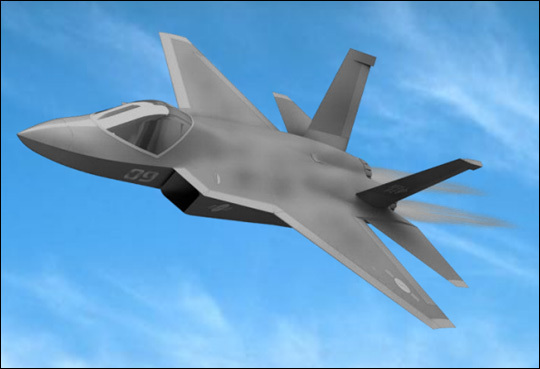KAI picked as preferred bidder for S. Korean fighter jet project
By KH디지털2Published : March 30, 2015 - 12:04
South Korea's sole aircraft manufacturer, Korea Aerospace Industries (KAI) Ltd., was picked as the preferred bidder for the country's indigenous fighter jet development program Monday, the arms procurement agency said.
Codenamed KF-X, the 8.67 trillion won ($7.84 billion) project calls for South Korea to develop fighter jets of the F-16 class to replace its aging fleet of F-4s and F-5s. Some 120 jets are to be put into service starting around 2025, with the production to cost another 9.3 trillion won.

KAI, in partnership with Airbus Defense and Space, vied against Seoul's top air carrier, Korean Air Lines Co., which teamed up with Lockheed Martin of the United States. The tender required participants to have a foreign technical assistance company.
"After reviewing their development plan, ability and bid price by the evaluation team comprised of government officials and experts, we've selected KAI as the preferred bidder," the Defense Acquisition Program Administration said in a statement.
The decision was approved at a defense project committee meeting presided over by Defense Minister Han Min-koo.
"We will make a final selection after completing negotiations on details to launch the project in the first half of this year," it added.
Industrial watchers say KAI has a technical edge over Korean Air based upon its experience developing the T-50 Golden Eagle supersonic trainer and the country's utility helicopter, the Surion.
During the committee meeting, the defense ministry also approved the $1.28 billion plan to upgrade the country's current PAC-2 air defense system and buy PAC-3 missiles by around 2020 as part of efforts to improve its anti-ballistic missile capabilities against threats mainly by North Korea.
DAPA will buy "hit-to-kill" PAC-3 missiles by the U.S. aerospace company, Lockheed Martin, through the foreign military sale program, according to its officials, adding the total number would be around 70.
The PAC-3 directly hits incoming missiles at an altitude of 40 kilometers, with a higher interception rate than PAC-2. The present system uses a blast-fragmentation warhead that could send debris from the exploded missile to the ground.
The procurement agency also selected U.S. defense contractor Raytheon as the contractor to upgrade the PAC-2 fire control system to enable it to launch both PAC-2 and PAC-3 interceptors by 2021.
"The patriot system is the key weapon of KAMD to counter North Korea's ballistic missiles. Once the upgrade is completed, it is expected to minimize damage on the ground by missiles," DAPA spokesman Kim Si-cheol told a briefing, citing the indigenous Korean Air and Missile Defense system which is a low-tier air defense program that the country has been working on. (Yonhap)



















![[Today’s K-pop] BTS pop-up event to come to Seoul](http://res.heraldm.com/phpwas/restmb_idxmake.php?idx=642&simg=/content/image/2024/04/17/20240417050734_0.jpg&u=)